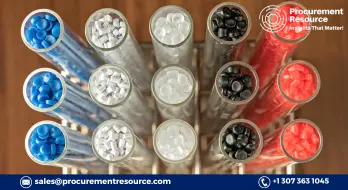Ethylene Vinyl Acetate prices in China have been declining amid increased output and passive demand
.webp)
The Ethylene Vinyl Acetate (EVA) prices in China has recently declined. The EVA market has recently experienced a downturn, primarily due to a decline in domestic consumption from key downstream industries, which has muted overall demand for the material. The demand side performance for EVA was notably weak throughout April, influenced by a rapid decline in the orders for foamed shoe materials. Additionally, traditional downstream purchases, such as those for cable materials, were weak.
As per the official data, the industrial output in China elevated by around 6.7% in April. Moreover, the production index(%) saw a slight uptick from 52.2 to 52.9 from March-April’24. Similarly, in April, the production of equipment for packaging in China increased by 11.1% (YOY), indicating a growth in the production capabilities of primary plastics, including EVA. This expansion in production contributed to an oversupply in the primary plastics market. Given the passive demand for products like EVA, this oversupply led to a decrease in prices. The abundant availability of these materials, without a corresponding increase in consumption, caused EVA prices to decline.
The purchasing behavior of photovoltaic enterprises further worsened the weak demand, as their buying levels were lower than expected, and on-site trading largely remained on the lower side for EVA. The lack of new orders in the market led merchants to increase actual orders through discounts and sales to clear the stock. This further weighed on the already crashing EVA prices.
Read More About Ethylene Vinyl Acetate Production Cost Reports - REQUEST FREE SAMPLE COPY IN PDF
On the supply side, the market was characterized by an overwhelming supply of goods that was difficult to digest due to the sluggish demand. Similar to the demand side, the traditional downstream procurement of foam shoe materials and cable materials remained weak throughout April. The purchasing levels of photovoltaic enterprises did not meet expectations, and trading focused on lower-end offers, which further pulled the prices down.


.webp)

